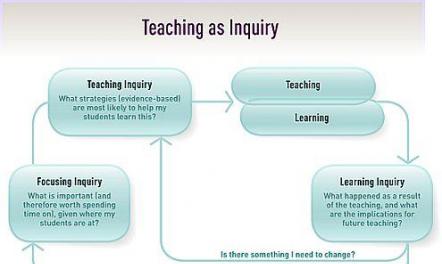Base your teaching on inquiry
The New Zealand Curriculum recognises that teaching is a cyclical process (page 35) in which teachers plan strategically, teach, and then modify their teaching to better achieve the desired learning.

Teachers need to be constantly asking themselves:
- where their students are in their learning
- how they can help them progress
- how their teaching impacts on the students’ learning.
Use this information to decide:
- What should I teach next? (a focusing inquiry)
- How should I teach it? (a teaching inquiry)
- What do I base those decisions on? (a learning inquiry)
The programme needs to have enough flexibility to ensure student interests can be accommodated.
Inquiry as a process – a possible approach
Planning – beginning
- What do I know about each student’s prior knowledge, goals and aspirations, and learning strengths and needs?
- What is important and worth spending time on?
- What concepts, big ideas, and academic vocabulary need to be introduced or reinforced?
- What contexts might help my students discover and explore these big ideas?
Delivery – during
- How can I teach my next lesson most effectively?
- What learning tasks and approaches are most likely to help my students to progress?
- What formative assessment methods can I use to monitor student progress and understanding, for example, quizzes, short answer questions, source interpretation, or word lists?
Is there something I need to change about how I teach?
- Do I engage students with the context or the material effectively?
- Do I maintain dialogue with students and encourage dialogue between students throughout the learning process?
- Do I recognise and accommodate the diverse learning needs of all my students, for example, by incorporating tikanga Māori into my teaching?
- How can I involve families, community, and whānau in my teaching?
Reflection – after
- What happened as a result of the teaching?
- Did my students achieve the specified outcomes?
- What are the implications for future teaching?
Application – next steps
- What are the next steps for my students’ learning?
- What concepts/big ideas need to be reinforced or introduced next?
- What different contexts might my students need to discover and explore these big ideas?
- How can I use student feedback to improve or modify planning, delivery, and outcomes for future learning?
Last updated July 22, 2010
TOP


